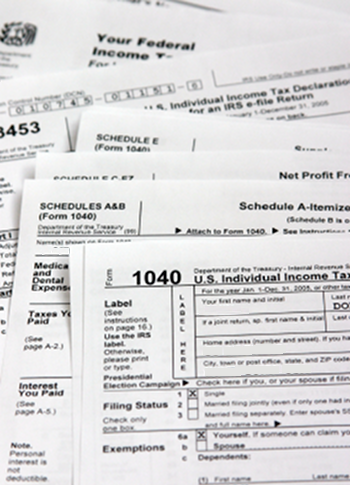How to Choose the Right Tax Form

If you are one of those people who do their taxes themselves, you need to be absolutely sure that you are using the right tax forms because failing to do so means that you will have prepare the tax forms all over again. The type of tax forms that you must use to file taxes depend on your financial situation, publication from IRS and a few tax schedules.
Here is how you can choose the right tax forms and save yourself the headache of working twice simply because you had chosen the wrong forms in the first place.
Instructions
-
1
Decide the method that you are going to use to file your taxes. There are two ways to file taxes; online or by mail. If you go with former option, the website or programme you use will choose the right tax forms for you. However, if you go with the latter option, you will have to obtain the tax forms from the internet, a public library during tax season or the local IRS office.
-
2
Choosing the correct Form 1040 type is very important because this is the form that you will use for calculating and thus reporting your taxable income. There are three types of form 1040; 1040, 1040EZ and 1040A.
1040: Choose this type if the total amount of your yearly taxable income is greater than or equal to $100,000, or your income is from self-employment, or you plan to itemise your deductions. 1040 is the most commonly used Form 1040 type.
1040EZ: Choose this form type if none of the conditions for using 1040 are met. Also, you must be under 65 years of age and must not have any dependents for you to use this Form 1040 type.
1040A: Choose this form type if none of the conditions for using 1040 are met but you will file adjustments such as Child Tax Credit, retirement contribution etc.
-
3
Here is how you choose any additional tax forms if necessary.
Schedule A: Use this form type if want to claim itemised deductions, interest on mortgage etc.
Schedule B: Use this form type if the taxable interest of dividend that you want to report is $1500 or more.
Schedule C or C-EZ: Use this form type if you are a business owner looking to report profit or loss from your business.
Schedule D: Used for reporting sales from stock, capital gains or losses.
Schedule E: Used for reporting supplemental income or losses.
Schedule SE: Used for calculating self-employment tax
Form 1040V: This is simply a voucher that you must fill because you will be submitting payments by mail.
-
4
Apart from the federal income tax return, every citizen is required to file state income tax returns as well. You will have to visit your state’s tax authority's website in order to find the correct tax forms for filing state tax returns because each state has its own set of rules and taxes.







